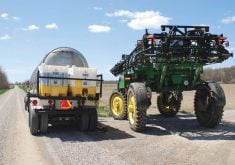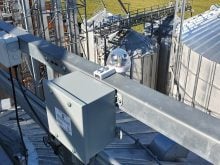LACOMBE, Alta. – Canola growers could improve yields in the fall if they learned to take it easy in the spring.
As farms grow larger with more acres to plant, farmers race against the clock to get seed into the ground in a timely fashion.
However, prairie canola researchers say seed placement would be more even, stands more consistent and yields higher if farmers slowed down during seeding.
Part of their research focuses on the problem of poor emergence and assesses machine speed and seeding depth of one to four centimetres when planting hybrid and open pollinated varieties.
Read Also

Petition launched over grazing lease controversy
Battle continues between the need for generation of tax revenue from irrigation and the preservation of native grasslands in southern Alberta rural municipality.
“Canola emergence is a big issue for canola growers,” agronomy researcher Neil Harker of Agriculture Canada’s research centre in Lacombe told a June grower tour.
“Seed costs are relatively expensive and in the research we have done prior to this, we have found out across the Prairies we rarely get much more than 50 percent of the seed we plant actually coming out of the ground, even when we have 95 percent germination.”
Doug Moisey, an agronomist with the Canola Council of Canada, said growers need an even stand to obtain better yields. Uneven seeding will result in plants emerging at different times, he added.
“We have got to get an even stand. There is some research showing an even stand is giving us our top yields.”
Results show up at harvest time when seeders travel at four m.p.h. at a one inch depth rather than seven m.p. h at a two inch depth.
“When we are deep seeding and we are going too fast, we are losing money,” he said. “You may think you are doing a good job by going faster, but sometimes you are not.”
He said farmers can test this advice by seeding some strips quickly and others slower, and then checking the plant stand later in the season.
If the stands are thicker, there is probably less need to spray the weeds that grow in the bare patches where seeds failed to germinate.
Some seeding systems are not designed to go fast, which can result in erratic results.
“It is the nut behind the wheel that maximizes the drill and it is the nut behind the wheel that maximizes emergence,” Moisey said.
An experiment planned for next year with the Prairie Farm Machinery Institute in Lethbridge will use low, medium and high disturbance drills and eight different openers to seed plots across the Prairies on various soil types to measure the impacts of speed and seed placement.















